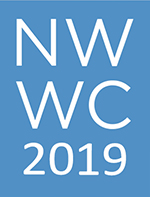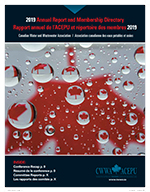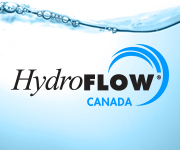 |
||||||||||||||||||||
| Subscribe | Past Issues | www.cwwa.ca | Water Source Magazine | ||||||||||||||||||||
|
CWWA News
We hosted another great Window on Ottawa at the start of June. By ‘great’ I mean it was a really great program of speakers on key federal-level policy. Those that were there seemed to be pretty impressed. As far as attendance goes…not so great.
The preliminary program has just been posted to the website, offering a snapshot of the event and our lineup of speakers. The program is constantly being updated, so be sure to check back as we confirm speakers, and finalize our popular utility management stream.
Our Annual Report and Membership Directory should be in all our members hands! This report not only contains a complete list of all CWWA members and our prime contacts, but also reports on CWWA’s advocacy activities, our annual financial report and a report on our annual National Water and Wastewater Conference. As we work towards refreshing the Annual Report and providing more information that is valuable to our membership, we hope that you enjoy the publication.
Federal Initiatives
Bill C-69, the Impact Assessment Act, continues to be the government’s most contentious legislation. Passed Second Reading in the Senate on December 12, 2018. Among other things, Bill C-69 proposes creating an Impact Assessment Agency and replacing the National Energy Board with the Canadian Energy Regulator. The purpose of this new standard is to provide compliance criteria and guidance on the design of flood resilient new residential communities as it relates to Greenfield development only. The standard is currently under review until June 30.
CWWA’s Water Efficiency Committee, lead by the former Chair Aaron Boulton-Chaykowski from the City of Calgary, developed a comparison of water consumption and rate data from across the country. This data was current as of 2018. Attempts were made to standardize the data for more valuable cross country comparisons. One challenge the project highlighted was the large number of rate structures and measurements used across the country. The intent is to keep the information up to date, and we encourage all our member utilities to submit data going forward. Member News
The Water Technology Acceleration Project’s (WaterTAP), funding from Ontario’s Ministry of Economic Development, Job Creation and Trade (MEDJCT) was terminated in March as a result of the provincial government’s cost savings efforts. Therefore, WaterTAP will cease operations on June 30, 2019. Infrastructure Asset Management practices are well-recognized in Canada for enabling municipalities to make strategic investment decisions. The Province of Ontario has required municipalities to develop asset management plans in order to receive Provincial funding. This has resulted in over 90 percent of municipalities to have council approved asset management plans. In addition, the Municipal Asset Management Program is a $50 million capacity-building fund entrusted to the Federation of Canadian Municipalities (FCM) by Infrastructure Canada (INFC) to enable the adoption and improvement of asset management practices across Canada’s municipal sector. Wastewater is part of the NPRI’s Sector Overview series. This sector overview displays NPRI substances that are found in wastewater and pollutant trends between 2009 and 2017. It also summarizes what facilities do to mitigate their environmental impacts. The Government of Canada is investing $89.7 million over five years to modernize Canada’s water-monitoring services. Through these investments, the Government is helping Canadians continue to get the most timely and accurate information possible on water flow and water levels across Canada’s rivers and lakes. The funding will help the National Hydrological Service hire new employees, strengthening its engineering and technical capacity. Funding will also allow for the modernization of the national hydrometric network’s stations and infrastructure, facilitating continuous collection and dissemination of data on water flow and water levels, across the country. Funding will also allow Environment and Climate Change Canada to test and implement new data gathering and data analysis technologies. Snippings & Clippings
Water Canada Southern Ontario waterways are showing dangerously increasing road salt levels in WWF-Canada’s Great Lakes Chloride Summer Hot Spot Maps. “While healthy levels for aquatic life should be less than 120 mg/L, our maps show some areas in southern Ontario currently have levels greater than 1000 mg/L year-round,” said Elizabeth Hendriks, vice-president of freshwater at WWF-Canada. “Ontario is over salting its parking lots, sidewalks, and roadways. A small pill bottle or salt shaker is all that’s needed to melt the equivalent of a city sidewalk slab.” |
||||||||||||||||||||





